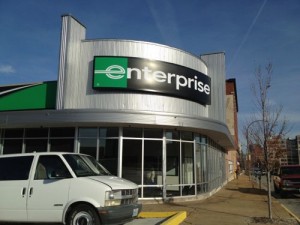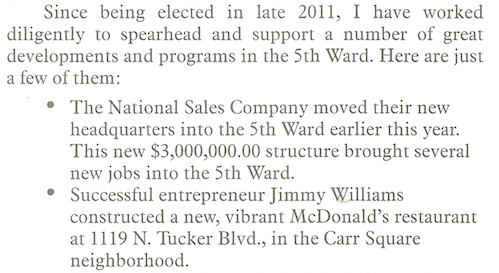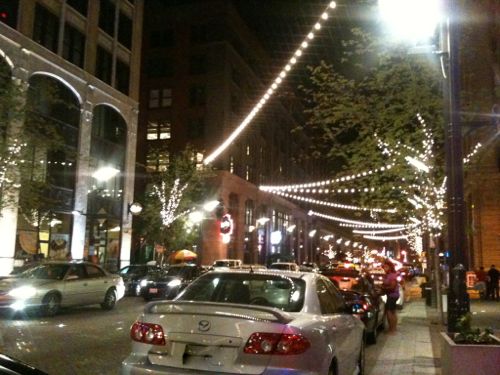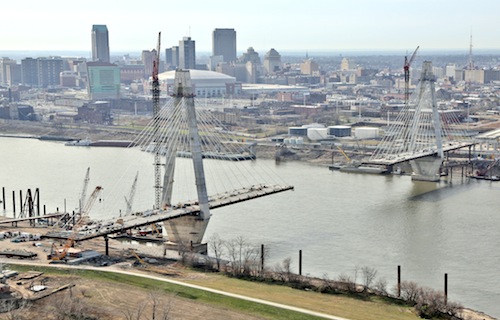St. Louis Needs True High-Speed Rail To Chicago
Earlier this month we learned of a St. Louis firm moving to Chicago:
St. Louis-based construction firm Clayco Inc. is moving its headquarters to Chicago, attracted by ease of air travel, proximity to clients, access to young professionals and the potential to land city business as Mayor Rahm Emanuel pushes ahead with public-private partnerships for infrastructureimprovements, its top executive said Thursday. (Chicago Tribune)

Clayco is keeping their St. Louis building and many employees:
Clayco’s founder Bob Clark moved to Chicago in 2010. He’s close with hard-charging Chicago Mayor Rahm Emanuel. Privately held Clayco will retain its large office on Interstate 170 but Clark and the company bosses will operate from their new HQ in a Wacker Drive skyscraper. (stltoday.com – Chicago lures Clayco with air connections and young professionals)
Ah the consolation prize, for now.
Lambert airport just can’t compete with the number of flights from Chicago’s two airports. But we don’t have to just sit back and watch company after company leave St. Louis. Nor do we have to just sit back and do nothing as young talent graduating from our higher ed institutions leave the St. Louis region to work in more vibrant cities like Chicago.
We need a vibrant and urban city of St. Louis — not just a few urban blocks scattered about.
Transportation wise we’re not going to get Lambert on par with Chicago, but we can support efforts to connect to Chicago by high-speed rail:
Right now, it takes five-and-a-half hours to get from St. Louis to Chicago by train but the director of the Midwest High Speed Rail Association says a two-and-a-half hour ride should be the goal, arguing that it is critical to economic development. (KMOX)
A 2.5 hour train ride from downtown St. Louis to downtown Chicago with wifi the entire time would be a game changer, we’d be better connected to the Great Lakes Megalopolis. Many are working to make this a reality, including:
I look forward to being able to quickly get to many cities via rail through Chicago. This connection will make St. Louis more attractive to young workers as a place to live and those seeking to hire them.
— Steve Patterson
b



